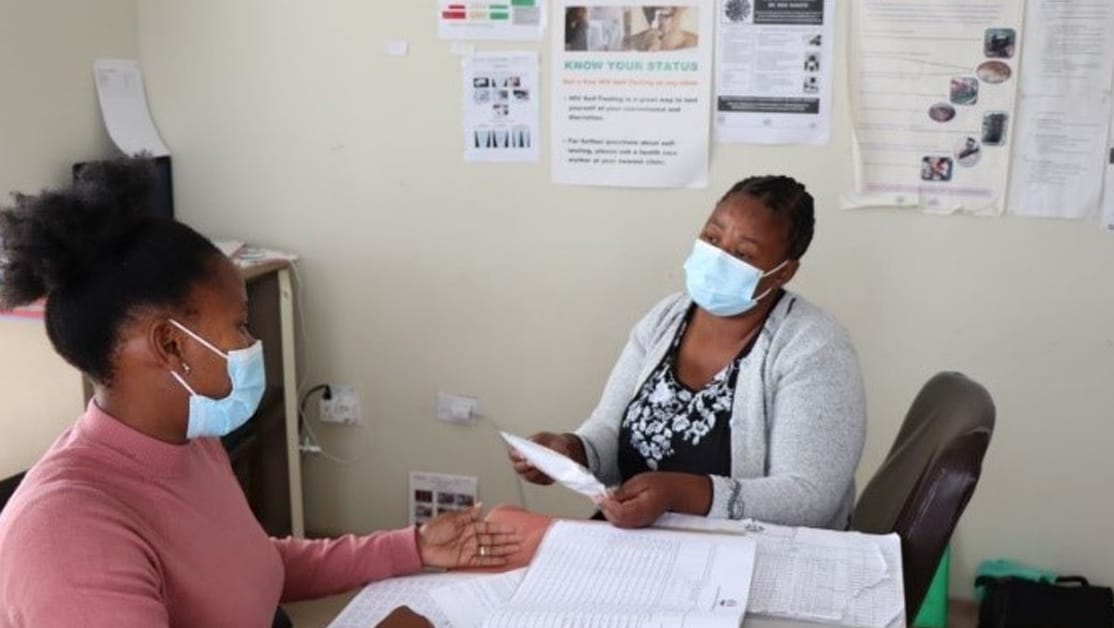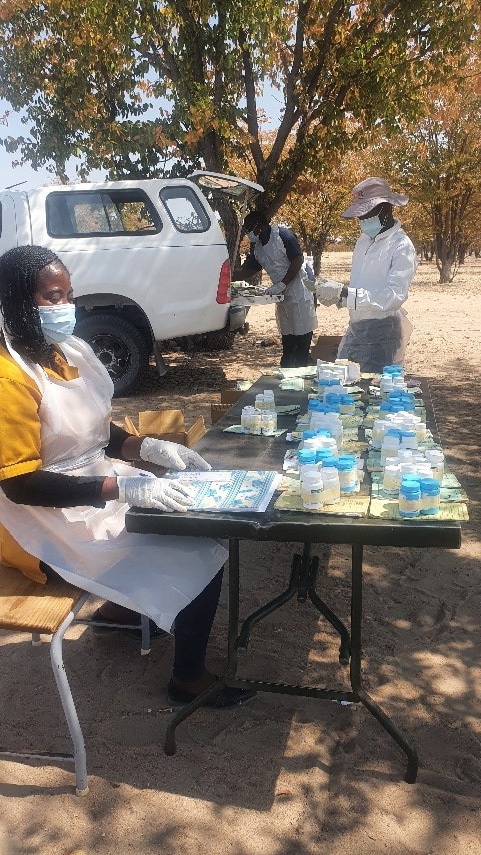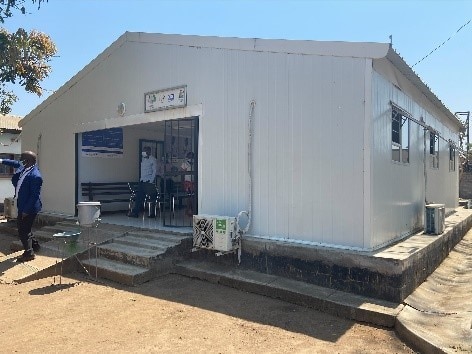At a glance
In this story, learn how countries supported by the U.S. President's Emergency Plan for AIDS Relief (PEPFAR) and the Centers for Disease Control and Prevention (CDC) adapted HIV testing and treatment to sustain services throughout the COVID-19 pandemic. These innovations provided uninterrupted care for people living with HIV (PLHIV), thereby saving lives.

Background
Despite advancements over several decades in the global HIV response, the COVID-19 pandemic introduced new challenges and threatened hard-won gains. Restriction to movement and other measures implemented to mitigate the spread of COVID-19 posed a challenge for HIV testing, treatment, and prevention services offered in healthcare settings. For many PLHIV, this meant a potential disruption of access to lifesaving antiretroviral treatment (ART). Retaining PLHIV on treatment during the pandemic became a focus of country governments aiming to stave off a decline in the uptake of critical services.
With technical guidance and assistance from CDC, implementing partners in countries supported by PEPFAR adapted HIV testing and treatment to sustain services throughout the pandemic. One innovation, called MMD or multi-month dispensing of ART, provides PLHIV with uninterrupted access to medications (for 3 to 6-months) and decreases the frequency of visits to healthcare facilities. Limiting such visits is a useful tool for infection prevention and control within these facilities, reducing the likelihood of exposure to COVID-19 for patients and providers. Since its implementation, MMD has flourished across several countries.
Below are examples from three countries highlighting their successful implementation of MMD and other innovations to HIV testing, treatment, and prevention services during the pandemic.
Lesotho

Like many countries, Lesotho found that meeting the needs of PLHIV became more challenging during the COVID-19 pandemic. The initial lockdown led to significant lapses in care for many patients. For this reason, the Ministry of Health, in collaboration with partners like Elizabeth Glaser Pediatric AIDS Foundation (EGPAF), scaled up MMD to ensure patients had access to lifesaving medications for 3-6 months at a time. By June 2020, approximately 60 percent of patients were on 3 months MMD in CDC-supported districts, which increased to 92 percent by June 2021. Significant strides were also made to increase the number of PLHIV on 6 months MMD from 18 percent in June 2020 to 59 percent by June 2021.
EGPAF also adapted HIV testing to reduce contact between health care workers and out-patients by providing self-testing kits to individuals and offering counsel on their use. HIV self-testing supports best practices in infection prevention and control and helps prevent new COVID-19 infections.
Namibia
In Namibia, CDC supported the Ministry of Health in implementing MMD to ensure uninterrupted supply of ART during the pandemic. As of June 2021, 28 percent of patients received a 6-month supply of medicines – a 7-fold jump from 4 percent in December 2019. Namibia is currently in the process of scaling up MMD for children to ensure retention in pediatric HIV treatment.
CDC implementing partner, Development Aid from People to People (DAPP), also strengthened Community Adherence Groups (CAGs) during the pandemic to ensure PLHIV receive critical services on time. CAGs are groups of 6-12 community members who are HIV-positive and meet on a regular basis to encourage adherence to treatment and take turns collecting ART for all group members. CAGs also receive counseling and support from DAPP on HIV treatment-related concerns.

Zambia
Zambia made MMD a priority at the onset of the COVID-19 pandemic and provided 6 months of ART to PLHIV who consistently adhere to treatment. This prioritization led to Zambia now having one of the highest percentages of PLHIV receiving MMD globally. CDC implementing partners Eastern Provincial Health Office and Southern Provincial Health Office have the highest rate of MMD coverage in Zambia, with 90 percent of PLHIV on 3-month MMD or longer. CDC-Zambia supported the efforts of implementing partners to decrease clinic congestion, reduce clinic wait times, and increase MMD during COVID-19 to maintain adherence to treatment.
CDC-Zambia also increased space allocated for HIV services at previously crowded clinics using prefabricated buildings. With the new buildings, the clinic increased their capacity from 382 patients to 1,016 and decreased wait time from over an hour to 15-minutes. These buildings create a separate space for patients to receive services including ART, pre-exposure prophylaxis (PrEP), voluntary medical male circumcision (VMMC), and cervical cancer screenings.

Impact
Utilization of MMD and other innovations contributed to protecting the health and safety of patients and healthcare providers during the COVID-19 pandemic. CDC continues to support these countries and others in making progress toward HIV epidemic control.
